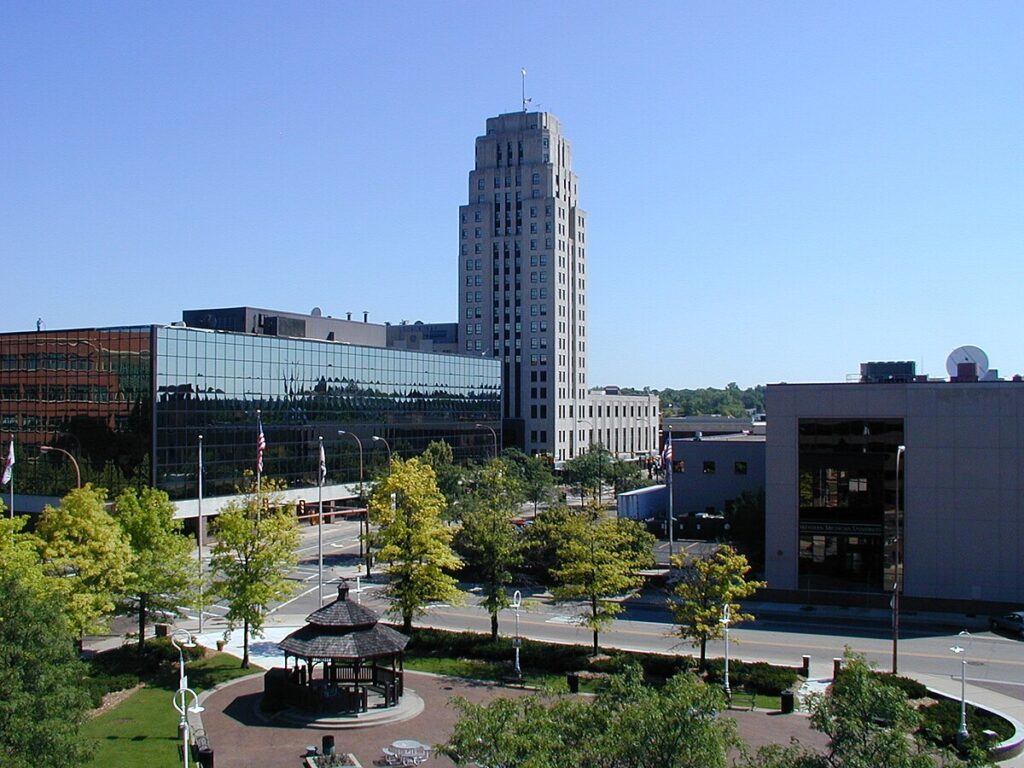
Moving to Battle Creek, Michigan: A Comprehensive Relocation Guide
Considering moving to Battle Creek, Michigan? This historic city offers Cereal City heritage, affordable living, and small-city character. With approximately 51,000 residents in 2025, Battle Creek combines Kellogg’s legacy with working-class character and Southwest Michigan’s regional hub.
Demographic Profile to Consider If Moving to Battle Creek:
Battle Creek’s 2025 population is approximately 51,000 residents in Calhoun County in Southwest Michigan, 120 miles west of Detroit. The median age is around 38 years, with working families, federal employees (Fort Custer Training Center nearby), and diverse residents. The population is approximately 67% White, 20% Black or African American, 8% Hispanic, 3% Asian. Battle Creek features Kellogg’s headquarters and cereal manufacturing heritage, working-class neighborhoods, federal facilities presence, and serves as Southwest Michigan’s regional center. The city attracts working families seeking Michigan affordability, federal employees, Kellogg’s workers, and those wanting small-city living. Battle Creek appeals to working-class residents prioritizing affordability and stable employment. The community balances Cereal City heritage with working-class character and federal presence. Find trusted local services for moving, living, and working in Battle Creek.Battle Creek Relocation Directory
Cost of Living to Consider If Moving to Battle Creek:
Battle Creek offers exceptional affordability. Median home values range from $110,000 to $170,000 in 2025, among Michigan’s most affordable cities while maintaining regional hub amenities. The median household income is approximately $48,000. Rental properties average $700 to $1,000 monthly. Michigan has flat income tax 4.25%. Property taxes are moderate. Overall cost of living is very competitive, making Battle Creek highly attractive for working families, federal employees, and those seeking maximum Michigan affordability. The city provides tremendous value with Kellogg’s employment stability. Housing costs create exceptional accessibility enabling comfortable living on working-class wages.
Economy and Job Market:
Battle Creek’s economy revolves around Kellogg Company (headquarters and manufacturing), federal facilities, healthcare, and manufacturing. Major employers include Kellogg’s (cereal production employing thousands), Fort Custer Training Center, W.K. Kellogg Foundation, Bronson Battle Creek hospital, Post Consumer Brands, and government. The cereal industry defines Battle Creek historically and economically. Federal presence provides stability. Healthcare offers employment. Typical industries include food manufacturing, federal/military, healthcare, and services. The economy depends on Kellogg’s health though diversification exists. Manufacturing jobs offer stable wages. The job market attracts food production workers, federal employees, healthcare professionals, and working families.
Education:
Battle Creek Public Schools serves city students with schools including Battle Creek Central High School and Lakeview High School. School quality varies requiring research. Kellogg Community College provides higher education and vocational programs. The educational infrastructure serves the working-class, diverse population.
Recreation and Lifestyle:
Battle Creek offers Cereal City heritage with Kellogg’s presence (though factory tours no longer available), Binder Park Zoo (excellent regional zoo), W.K. Kellogg Manor House, and Leila Arboretum. The city features Fort Custer Recreation Area providing extensive outdoor recreation, Battle Creek Linear Park trail system along the Kalamazoo River, and working-class character. Residents enjoy affordable Midwest living, Binder Park Zoo, outdoor recreation at Fort Custer, Tony the Tiger connection (Kellogg’s mascot), and authentic small-city atmosphere. The lifestyle emphasizes affordable working-class living, Cereal City pride, outdoor recreation, and Midwest values. The four-season Michigan climate features cold winters and pleasant summers. The community values Kellogg’s heritage (Cereal City pride), Tony the Tiger mascot, affordable living, working-class identity, and W.K. Kellogg Foundation presence. Living in Battle Creek means accepting Southwest Michigan isolation, working-class character, some urban challenges, economy dependent on Kellogg’s, and small-city limitations while enjoying exceptional Michigan affordability, Kellogg’s employment providing stable wages, Cereal City heritage creating unique identity, Binder Park Zoo, and authentic working-class Midwest character defining Southwest Michigan’s most affordable hub where Cereal City meets affordability and Tony the Tiger represents the working-class city.
Healthcare and Services:
Battle Creek residents access comprehensive healthcare through Bronson Battle Creek Hospital providing regional medical services. The healthcare infrastructure serves Southwest Michigan.
Transportation:
Battle Creek is accessed via Interstate 94, Interstate 69, and various corridors at a regional transportation hub. Most residents use personal vehicles. The location provides access to Kalamazoo (25 minutes) and Grand Rapids (1 hour). Typical travel times to Detroit are 2 hours.
Conclusion:
Moving to Battle Creek in 2025 offers affordable Southwest Michigan living with Cereal City heritage, Kellogg’s employment, and working-class character. The city’s combination of exceptionally low housing costs, stable manufacturing employment, and Binder Park Zoo makes it ideal for working families and those seeking Michigan’s most affordable regional hub where Cereal City heritage meets exceptional value and Tony the Tiger defines the working-class Wolverine State destination.

